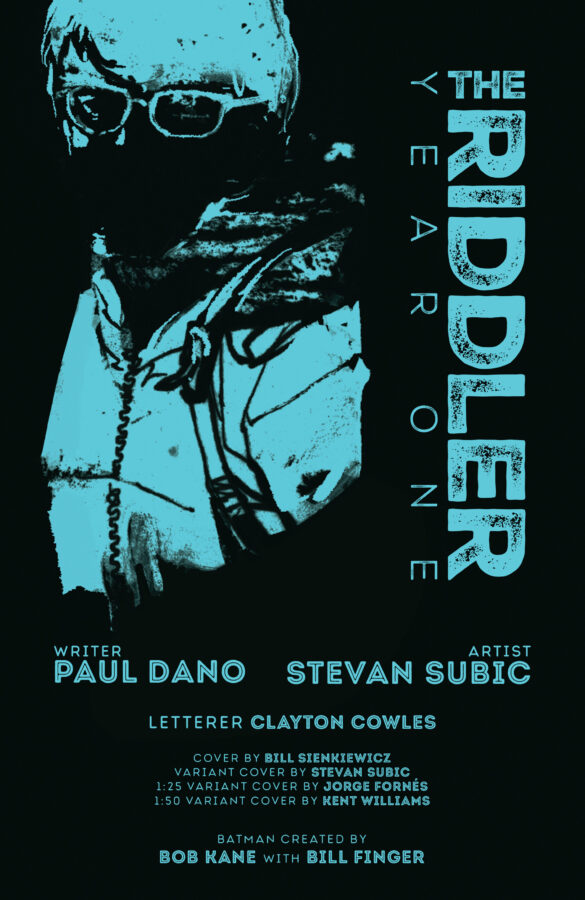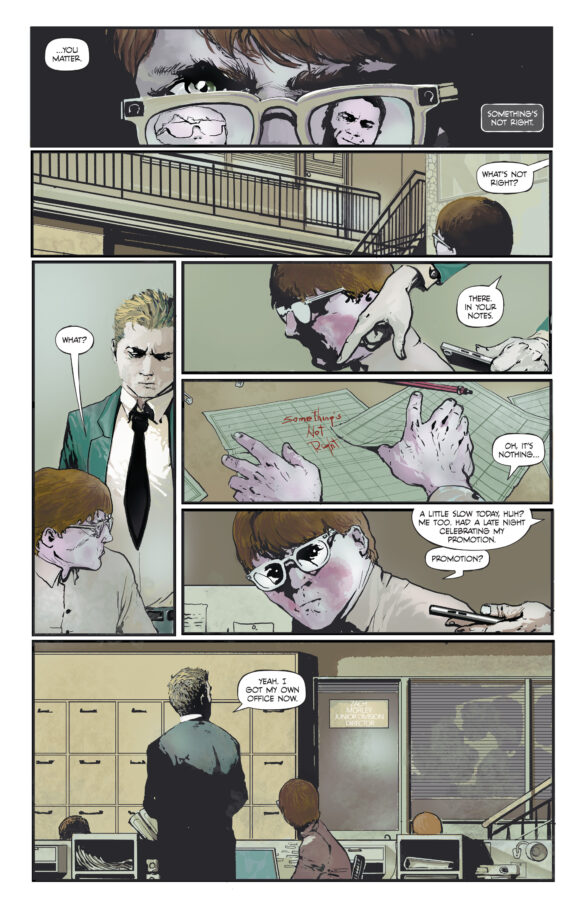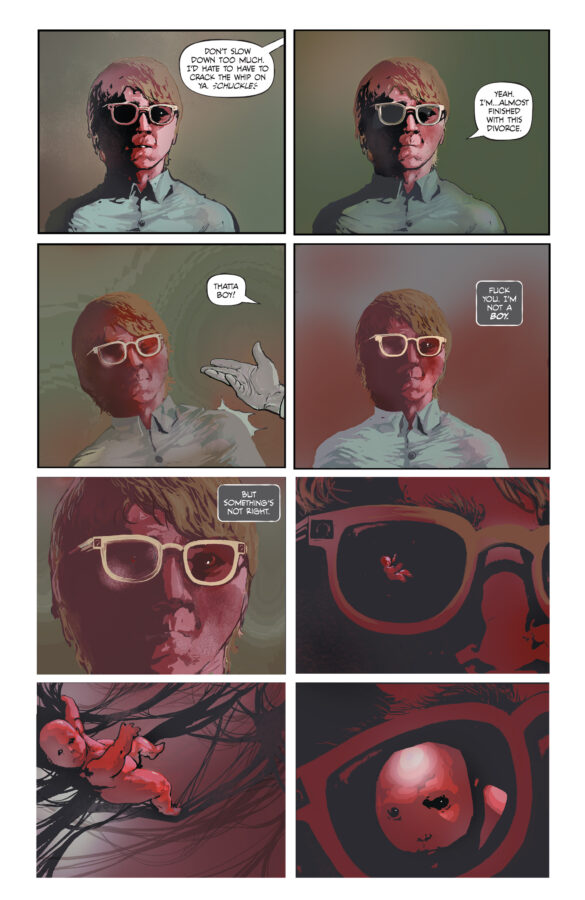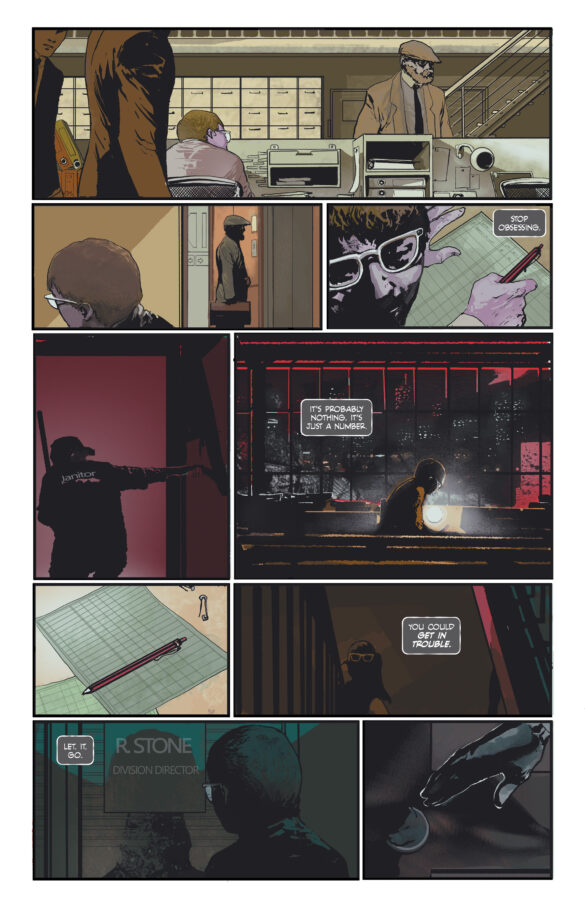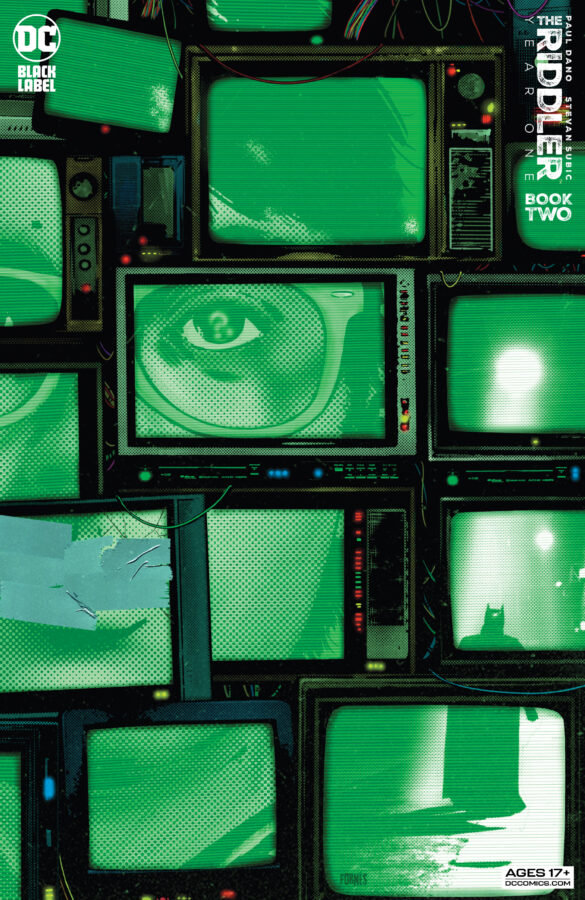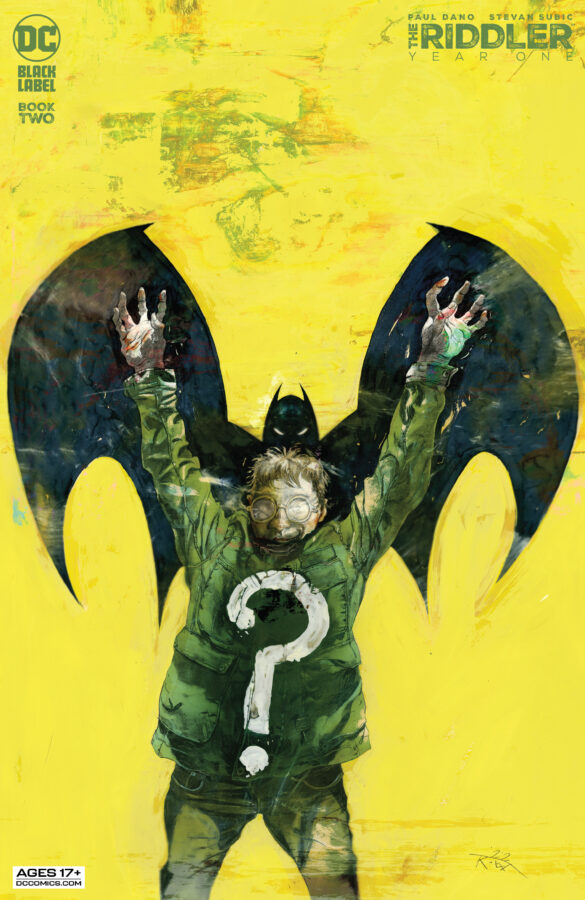“People Lie, Numbers Don’t”
 Writer: Paul Dano
Writer: Paul Dano
Artist: Stevan Subic
Letterer: Clayton Cowles
Reviewer: Steven Lee Sharpe
The Riddler: Year One #2 continues actor Paul Dano’s exploration of the origins of the character he played in Matt Reeves’ The Batman movie. Dano presents a character struggling to do the right thing in the face of criminal corruption whilst his non-neurotypical personality keeps him teetering on a precipice of psychosis.
Two things fuel The Riddler’s plans in The Batman. The first is his desire to address the criminal corruption in Gotham. In the previous issue, we were introduced to the origins of Edward Nashton’s obsession when he discovers that the accountancy firm he works for has been moving money between accounts that are linked to the crime boss, Salvatore Maroni. Key to this is that Nashton wants to do the right thing by reporting the irregularities he’s discovered, but he’s dismissed by those in charge.
This is where the plot interweaves with Nashton’s neurotic personality disorder. Despite warnings from his bosses, and muttered threats in the streets, his obsessive compulsion to solve the puzzle drives him onwards. He displays such an extraordinary level of patient clue-gathering that even Batman himself would be impressed at his persistence. The irony is, of course, that Batman’s concurrent investigation into organized crime – seen here in just occasional panels – is what Nashton’s drawing on for inspiration. So far, we have two men on similar missions.
There’s a second factor to The Riddler, as seen in The Batman; his grudge against the Waynes, Thomas in particular. In The Riddler: Year One, we’re given glimpses into Nashton’s troubled childhood at the orphanage featured in the movie, which was owned by Bruce’s parents.
The issue starts brilliantly with a conversation between Thomas Wayne and Edward Nashton as a child. A recurring motif for Nashton’s troubled mind in the comic has been strands of darkness, like thick gloop, and as the dialogue progresses, what starts out as swirling masses slowly becomes the faces of Thomas and Edward as Thomas introduces himself and makes a connection with the boy – Thomas Wayne brings hope and clarity to Edward Nashton’s world. The irony is that in making him a promise of a better future, Thomas poses the young Edward a riddle… which he solves instantly.
The Riddler: Year One #2
What makes this comic stand out from the rest is that, not only is the story told through Edward Nashton’s perspective, but this perspective is often distorted into his nightmarish version of reality. Artist Stevan Subic paints a world that veers between reality and Nashton’s impression of it. As well as the recurring black tendrils, nauseating colors surround him, and faces suddenly change into horrific monsters. On one page a large question mark looms over Nashton’s head, made up of pictures of him at different ages and smudges that look like veins or the vascular system of a leaf. In other panels a gradual close-up of Nashton’s glasses reveals what initially looks like a reflection, to be a baby that turns its head to us.
The chilling imagery counterbalances the sympathetic way that Dano writes the character. Having spent his whole life bullied and abused, Edward Nashton is trying to do the right thing. At the same time, just as Bruce Wayne did, he has finally a purpose in his life – to use his extraordinary analytical skills. “Will it be… that this brain will finally get put to use?” he says at one point. If you read the script without the images, you could think that you’re reading the origin of a good guy, thanks to Dano and Subic’s working relationship however, the pictures tell a very different story. Put together, the results make for more of a tragedy.
Conclusion
If you had any suspicions that this series would be a character study rather than a plot-heavy, revelation-filled yarn, then The Riddler: Year One #2 will confirm it. In some ways it doesn’t add too much to the plot in the first issue; Edward Nashton is like one of the rats that keep popping up in the background of the comic, scurrying around, seeing all, but ultimately ineffective. The thing is, that’s the point; to watch him sink further in his desperation and powerlessness until something gives. The fact that Nashton’s road to hell is paved with good intentions brings the story pathos that evokes Batman: The Killing Joke.

Images Courtesy of DC Entertainment
